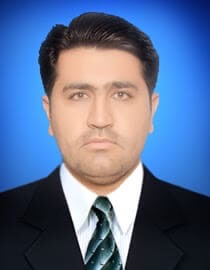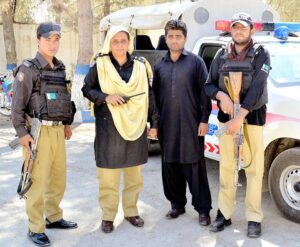MEHRGARH: THE ARCHAEOLOGICAL TREASURE OF PAKISTAN
Syed Muhammad Qaseem
Any civilized society would like to cherish its archaeological sites as a national treasure. Through archeology, we are able to know about past human living standards. Pakistan is rich in archaeological treasures such as Mehrgarh, Mohenjo-Daro and Harappa, etc, but they are neglected by the government. Even, the discovery of Mehrgarh was done by a French archeologist couple: Jean-Francois Jarriage and Catherine Jarriage in 1974. Excavation work on Mehrgarh was from 1974 to 1986 and again from 1997 to 2000.
Mehrgarh is a Balochi word in which ‘Mehr’ means Love and ‘Garh’ means heaven, so we can say that Mehrgarh means ‘The heaven for love’. It is a 495-acre(2.00 square km) archaeological site located in the Kacchi plain of Balochistan, Pakistan. It is located between the present cities Quetta, Kalat, and Sibi.
Mehrgarh the earliest evidence of human civilization:
Mehrgarh is the earliest evidence of human civilization from 7000 BC and abandoned in 2500 BC. Mehrgarh is stated to be the first place in South Asia, where the human being quit the life of caves and started to build towns. This is the area, where the nomadic life turned into communities to work together in an effective way and cultivate foodstuff and make their lives easy.
THE ARCHAEOLOGICAL TREASURE OF PAKISTAN
Archaeologists divide the occupation of Mehrgarh into eight phases. The phase one was Neolithic (stone age), there were no ceramics and no pottery. The earliest farming in that area was started by the semi-nomadic people using wheat and barley and the animals like cattle sheep and goats. They used granaries to store food for future use. The houses were made of mud. The pottery work was started in the second phase and they used to draw paintings on the pottery. The statues found in the burials were decorated with beads and other feathers, so we can determine that they were aware of fashion.
Many things were found under the ground such as baskets, stone and bone tools, beads, bangles, pendants, and animal sacrifices. Ornaments of seashell, limestone and sandstone have been found. The remains of two men from Mehrgarh were found and were observed that their teeth were drilled, this showed that they had knowledge of proto-dentistry. There were two types of burials in the Mehrgarh site. There were individual burials where a single individual was enclosed in narrow mud walls and collective burials with thin mud-brick walls within which skeletons of six different individuals were discovered. The bodies in the collective burials were kept in a flexed position and were laid east to west. The child’s bones were found in large jars.
Oldest Ceramic in South Asia:
The oldest ceramic figurines in South Asia were found at Mehrgarh. They occur in all phases of the settlement and were prevalent even before pottery appears. The earliest figurines are quite simple and do not have complex features. However, by 4000 BC begin to show their characteristic hairstyles. All the figurines up to this phase were female. Male figurines appear only from phase VII and gradually become more numerous. Many of the female figurines are holding babies, and these showed the “mother goddess”.
Many Textbooks and Documentaries have been made on Mohenjo-Daro and Indus valley civilization but Mehrgarh is neglected continuously. A large number of antiquities of Mehrgarh, Zhob, Loralai, and other archaeological sites of Balochistan are available in the market. There is no well-established museum in Balochistan and more than 16000 archaeological materials have been found in different sites of this province such as from Mehrgarh, Nausharo, Meer-i-Qalat most of these are kept in Karachi.
THE ARCHAEOLOGICAL TREASURE OF PAKISTAN
What government needs to do?
The govt must collect these materials because these antiquities belong to humanity and not to a few individuals. The site of Mehrgarh is crumbling and rain is the main factor in it, a wall must be built around the site, Direction boards be built on the way for indication. The federal government is requested to declare Mehrgarh a permanent World Heritage site on UNESCO’s list. It is the oblique duty of the provincial government that makes people aware of these sites through making documentaries etc even the village near Mehrgarh is unaware of it.
To be very precise, the present provincial and federal governments must allocate substantial funds and form a team of experts to protect this world heritage and ancient human civilization.
The author is a student of Software Engineering at Balochistan University of Information Technology and Management Sciences (BUITEMS). He can be contacted at khanqaseem34@gmaill.com, @Qaseemk34916424 on Twitter






